Page 225 of 404

Airbag system -
--------------=---=--
& WARNING (continued)
• Airbag work most effectively when used with properly worn
safety belts.
• Therefore, always wear your safety belts and make sure that
everybody in your vehicle is properly restrained.
& WARNING
A person on the front passenger seat, especially infants and small
children, will receive serious injuries and can even be killed by
being too close to the airbag when it inflates.
• Although the Advanced Airbag System in your vehicle is
designed to turn off the front passenger airbag if an infant or a
small child is on the front passenger seat, nobody can absolutely
guarantee that deployment under these special conditions is
impossible in all conceivable situations that may happen during
the useful life of your vehicle.
• The Advanced Airbag System can deploy in accordance with
the
"low risk" option under the U.S. Federal Standard if a child that
is heavier than the typical one-year old child is on the front
passenger seat and the other conditions for airbag deployment
are met.
• Accident statistics have shown that children are generally safer
in the rear seat area than in the front seating position.
• For their own safety, all children, especially 12 years and
younger, should always ride in the back properly restrained for
their age and size. •
Advanced front airbag system
Your vehicle is equipped with a front Advanced Airbag System in
compliance with United States Federal Motor Vehicle Safety Stan
dard 208 as applicable at the time your vehicle was manufactured.
Controls and equip ment Safety first Vehicle operation
The
front Advanced Airbag System supplements the safety belts to
provide additional protection for the driver's and front passenger's
heads and upper bodies in frontal crashes . The airbags inflate only
in frontal impacts when the vehicle deceleration is high enough.
The front Advanced Airbag System for the front seat occupants is
not a substitute for your safety belts . Rather, it is part of the overall
occupant restraint system in your vehicle. Always remember that
the airbag system can only help to protect you, if you are sitting
upright, wearing your safety belt and wearing it properly. This is why
you and your passengers must always be properly restrained, not
just because the law requires you to be.
The Advanced Airbag System in your vehicle has been certified to
meet the "low risk" requirements for 3 and 6 year -old children on the
passenger side and very small adults on the driver side. The low risk
deployment criteria are intended to help reduce the risk of injury
through interaction with the front airbag that can occur, for
example, by being too close to the steering wheel and instrument
panel when the airbag inflates.
In addition, the system has been certified to comply with the
"suppression" requirements of the Safety Standard, to turn off the
front airbag for infants 12 months old and younger who are
restrained on the front passenger seat in child restraints that are
listed in the
Standard=> page 245, "Child restraints and Advanced
Airbags".
"Suppression" requires the front airbag on the passenger side to be
turned off if:
• a child up to about one year of age is restrained on the front
passenger seat in one of the rear-facing or forward-facing infant
restraints listed in Federal Motor Vehicle Safety Standard 208 with
which the Advanced Airbag System in your vehicle was certified. For
a listing of the child restraints that were used to certify your
vehicle's compliance with the US Safety
Standard => page 245,
• weight less than a threshold level stored in the control unit is
detected on the front passenger seat.
~
Vehicle care Do-it-yourself service Technical data
Page 226 of 404

___ A_ ir_b _ a_ g=- s-a. y_s _t _e _m _________________________________________________ _
When a person is detected on the front passenger seat, weighing
mor e tha n the to ta l w eigh t of a c hild th at is a bout 1 year old
restrain ed in one of th e rear -facing or forward -fac ing infant
r es trai nts (l isted in Fede ra l M oto r Veh icle Safe ty Sta ndard
208 wi th
which the Advanc ed Airba g Syst em in your ve hic le was certified),
the fro nt airbag on the pas se nge r si de may o r may not de ploy .
The
PASSENGER AIR BAG OFF li g ht com es on when the elec troni c
contro l unit detects a total weight on the front passenger seat that
r e qui res th e front airb ag to b e turned off. If th e
PASSENGER AIR BAG
OFF
li g ht does not com e on, the front airbag on the pass enger side
h as not b een t urn ed off by the c ont rol unit and can d eploy if th e
control unit senses an impact that meets t he conditions stor ed in its
mem ory.
If the t otal weig ht on the fro nt passe nger seat is m ore than that of
a typical
1 y ear -old, but less than the we ight of a small adult, the
fr ont air ba g on th e passen ger side m ay depl oy (the
PASSENGER AIR
BAG OFF
li ght does not come on).
For example, the airbag may deploy if:
• a sma ll chil d th at is heav ie r th a n a ty pica l 1 yea r-old chi ld is o n
the front passenge r seat (regardless of w hether the child is in one
o f the chi ld seats lis ted
=> p ag e 24 5),
• a child who h as out grown child r estr ain ts is on th e fron t
passen ger seat.
I f the front passenge r airba g is turned off, the
PASSENGER AIR BAG
OFF
li g ht in the ce nter of t he ins trum ent p anel will com e on and stay
o n.
The fro nt airb ag o n the pa ssenge r sid e may
not de plo y (t he
PASSENGER AIR BAG OFF lig ht does not illumi nate a nd sta y li t) if:
• a small adu lt or teenager is on the front passenger seat
• a pass enge r w ho i s no t si tti ng upright wi th their back aga inst a
non -reclined bac krest with their feet on the vehicle f loor in front of
the sea t is o n the front pass enger se at.
I f the front passenger ai rbag deploys, the Fed era l S tanda rd requ ires
th e a irbag to m eet th e "low risk " de ploy ment c rit eri a to he lp reduc e th
e risk of injury throu gh interaction with th e airbag . "Low risk"
dep loyment oc cur s in th ose cras hes tha t take p lace at l ow er decel
e rations as defined in t he elect ron ic co ntro l
unit=> page 22 9.
Always remember : Even th ough yo ur veh icle is eq uipped w ith
A dv anced Airbags, the safest plac e for chil dren i s properly
r estra ined on the back seat. Please be su re t o read t he important
i n form atio n in th e sec tions th at f oll ow and be su re to heed all of the
W ARNING S.
& WARNING
To reduce the risk of injury when an airbag inflates, always wear
safety belts properly.
• If you are unrestrained, leaning forward, sitting sideways or out
of position in any way, your risk of injury is much higher .
• You will also receive serious injuries and could even be killed if
you are up against the airbag or too close to it when it inflates
-
even with an Advanced Airbag => page 218.
& WARNING
A child in a rearward -facing child seat installed on the front
passenger seat will be seriously injured and can be killed if the
front airbag inflates
-even with an Advanced Airbag System .
• Although the Advanced Airbag System in your vehicle is
designed to turn off the front airbag when a rearward -facing child
restraint has been installed on the front passenger seat , nobody
can absolutely guarantee that deployment is impossible in all
conceivable situations that may happen during the useful life of
your vehicle.
• The inflating airbag will hit the child seat or infant carrier with
great force and will smash the child seat and child against the
backrest , center arm rest , door , or roof .
• Always install rearward -facing child restraints in the back seat .
~
Page 227 of 404

Airbag system -
--------------=---=--
& WARNING (continued)
• If you must install a rearward facing child seat on the front
passenger seat because of exceptional circumstances and the
PASSENGER AIR BAG OFF light does not come on and stay on,
immediately install the rear-facing child seat in a rear seating posi
tion and have the airbag system inspected by your Audi dealer.
& WARNING
If, in exceptional circumstances, you must install a forward-facing
child restraint on the front passenger's seat:
• Always make sure the forward-facing seat has been designed
and certified by its manufacturer for use on a front seat with a
passenger front and side airbag.
• Never put the forward-facing child restraint up against or very
near the instrument panel.
• Always move the passenger seat into its rearmost position in
the seat's fore and aft adjustment range, as far away from the
airbag as possible, before installing the forward-facing child
restraint. The backrest must be adjusted to an upright position.
• Make sure that the PASSENGER AIR BAG OFF light comes on
and stays on all the time whenever the ignition is switched on. •
Advanced Airbag System components
The front passenger seat in your vehicle has a lot of very important
parts of the Advanced Airbag System in it. These parts include the
weight -sensing mat, sensors, wiring, brackets, and more. The func
tion of the system in the front passenger seat is checked by the elec
tronic control unit when the ignition is on. The control unit monitors
the Advanced Airbag System and turns the airbag indicator light on
when a malfunction in the system components is detected. The
function of the airbag indicator light is described in greater detail below . Because the front passenger seat contains important parts
Controls and equip
ment Safety first Vehicle operation
of the Advanced Airbag System, you must
take care to prevent it
from being damaged. Damage to the seat may prevent the
Advanced Airbag for the front passenger seat from doing its job in
a crash.
The front Advanced Airbag System consists of the
following:
• Crash sensors in the front of the vehicle that measure vehicle
acceleration/deceleration to provide information to the Advanced
Airbag System about the severity of the crash.
• An electronic control unit, with integrated crash sensors for front
and side impacts. The control unit "decides" whether to fire the
front airbags based on the information received from the crash
sensors. The control unit also "decides" whether the safety belt
pretensioners should be activated.
• An Advanced Airbag with gas generator for the driver inside the
steering wheel hub.
• An Advanced Airbag with gas generator inside the instrument
panel for the front passenger.
• A weight -sensing mat under the upholstery padding of the front
passenger seat cushion that measures the total weight on the seat.
The information registered is sent continuously to the electronic
control unit to regulate deployment of the front Advanced Airbag on
the passenger side .
• An airbag monitoring system and indicator light in the instru
ment
cluster => page 229.
• The PASSENGER AIR BAG OFF light comes on and stays on in the
center of the instrument
panel => page 230, fig. 233 and tells you
when the front Advanced Airbag on the passenger side has been
turned off .
• A sensor below the safety belt latch for the front seat passenger
to measure the tension on the safety belt . The tension on the safety
belt and the weight registered by the weight-sensing mat help the
control unit
"decide" whether the front airbag for the front
passenger seat should be turned off or
not=> page 220, "Child
restraints on the front seat
-some important things to know". .,_
Vehicle care Do-it-yourself service Technical data
Page 228 of 404

___ A_ ir_b_ a_ g
=-- s
--a. y_s _t _e _m _________________________________________________ _
• A s ensor in the safety belt latch for the driver and for the front
s eat pass enger tha t sen ses wheth er that safe ty bel t i s la tc hed or not
and transm its this information to t he el ectron ic control unit .
& WARNING
Damage to the front passenger seat can prevent the front airbag
from working properly .
• Improper repair or disassembly of the front passenger and
driver seat will prevent the Advanced Airbag System from func
tioning properly.
• Repairs to the front passenger seat must be performed by qual
ified and properly trained workshop personnel .
• Never remove the front passenger or driver seat from the
vehicle .
• Never remove the upholstery from the front passenger seat.
• Never disassemble or remove parts from the seat or disconnect
wires from it .
• Never carry sharp objects in your pockets or place them on the
seat .
If the weight-sensing mat in the passenger seat is punctured
it cannot work properly.
• Never carry things on your lap or carry objects on the
passenger seat . Such items can increase the weight registered by
the weight-sensing mat and send the wrong information to the
airbag control unit .
• Never store items under the front passenger seat . Parts of the
Advanced Airbag System under the passenger seat could be damaged , preventing them and the airbag system from working
properly.
• Never place seat covers or replacement upholstery that have
not been specifically approved by Audi on the front seats.
• Seat covers can prevent the Advanced Airbag System from
recognizing child restraints or occupants on the front passenger
seat and prevent the side airbag
in the seat backrest from
deploying properly.
& WARNING (continued)
• Never use cushions, pillows, blankets or similar items on the
front passenger seat . The additional padding will prevent the
weight-sensing mat in the seat from accurately registering the
child restraint or person on the seat and prevent the Advanced
Airbag System from functioning properly .
• If you must use a child restraint on the front passenger seat
and the child restraint manufacturer's instructions require the use
of a towel , foam cushion or something else to properly position
the child restraint, make certain that the PASSENGER AIR BAG OFF
light comes on and stays on whenever the child restraint is
installed on the front passenger seat .
• If the PASSENGER AIR BAG OFF light does not come on and stay
on , immediately install child restraint in a rear seating position
and have the airbag system inspected by your Audi dealer.
•
How the Advanced Airbag System
components work together
T he front Advanc ed Airba g Syst em and th e side airba gs supplement
t h e p rotection offered by the fro nt three -point safety belt s with
pretens ioners and load limiters and t he adjustab le head restraints
to help reduce the risk of in jury in a w ide range of acc ident and
cras h situat ions. Be sure to read the im por tant in form ation abo ut
safety and heed the WAR NINGS in this chapter.
Depl oyment of the Adva nced Airb ag Sys tem and the activa tio n of
the safety be lt pretensioners depend on the deceleration measured
b y th e c ra sh sen so rs and regi stere d by the elec tro nic c ontro l u nit.
C rash severity d epends on speed and dece leration as w ell as the
m ass a nd stiffness of t he vehicle o r object i nvo lve d in the c ra s h .
When t he elec tron ic contro l unit regist er s a lo w seve rity c rash a nd
the safety belt is be ing used, the a irbag wi ll not deploy . If the safety
b elt is not being u se d, the first s ta ge de ploys, f ollow ed by the
second stage after a much later time in t he crash sequence .
.,,_
Page 229 of 404

If the electronic control unit registers a crash of medium severity,
the first s tage of the airbag deploys followed by the second stage at
a much later time in the crash sequence -regardless of whether the
safety be lt is being used or not . In higher severity crashes as regis
tered by the e lectronic control unit , both the first and second stages
deploy almost at the same time .
On the passenger side, regardless of sa fety belt use, the airbag w ill
be turned off if the weight on the passenger seat is less than the
a m ount program med in the e lectronic control unit . The front airbag
on the passenger side w ill also be turned off if one of the chi ld seats
that has been cer tified unde r Federal Motor Vehicle Safety Standard
208 has been recogni zed on the seat . The
PASSENGER AIR BAG OFF
light comes on and stays on to tell you when the front Adva nced
Airbag on the passenger side has been turned
off~ page 220 ,
"Child restraints on the front seat -some important things to
know ".
& WARNING
T o reduce the risk of injury when an airbag inflate s, alwa ys w ear
safety belts properly.
• If you are u nrestra ined , leaning forward , sitting sideway s or out
of position in any way , your risk of injury is much higher .
• You
will also re ce ive serious injur ie s and could even be killed if
you are up again st the airbag or too close to it when it inflate s -
ev en with a n Advan ced
Airbag ~ page 218. •
Airbag syst em
More Important things to know about front
airbags
Fi g. 2 32 In fl ated front
airba gs
Safety be lts are important to he lp keep front seat occupants in the
proper seated position so tha t airbags can unfold properly and
provide supplementa l protection in a fronta l collision.
The front air bags are designed to provide addi tional p rotecti on for
the chest and face of the driver and the front seat passenger when :
• safety belts are worn properly ,
• the seats have been positioned so that the occupant is properly
seated as far as possi ble fr om the a irbag,
• and the head restraints have been properly adjusted .
Because airbags inflate in the blink of an eye with grea t force , things
you have on your lap or have p laced on the seat cou ld become
dangerous projectiles , and be pushed into you if the airbag inflates .
When an airbag deploys, fine dus t is released . This is norma l and is
not caused by a fire in the vehicle. This dust is made up mostly of a
powde r used to lubrica te the airbags as they d eploy . It could irri tate
skin .
I t is important to remember that while the supplemental airbag
system is designed to reduce the likel ihood of serious injuries, other
injuries, for example swelling , bruising and minor abrasions, can
a lso happen when ai rbags inflate . Airbags do no t pro tect the arms
~
Vehicle care I I irechnical data
Page 230 of 404

__ ....!:,A~i'.!. r !::b :!a ~g:L.: s~ y~ s:!: t::.:: e~ m'..!.!.. ______________________________________________ _
or the low er parts of the body . Front airbags only supplement th e
th re e po int safe ty b elts in som e front al c ollis ions in which the
vehic le dece lerat ion is h igh enou gh to deploy the a irba gs.
Front airbags will not deploy:
• if the ignition is switched off when a crash occurs,
• i n sid e coll is io ns,
• in r ear- e nd collisi ons ,
• in ro llovers,
• when th e cras h de cele ration meas ured b y th e a irba g sys tem is
less than the mini mum threshold needed for a irbag deployme nt as
r egi stere d by th e ele ctr on ic con trol uni t.
The front passenger airbag will also not deploy :
• when th e front p asseng er seat is not occ upi ed ,
• when the weight on the front pas senge r seat a s sensed by the
A dvance d Airb ag Syste m indicates t hat th e fr on t airb ag on the
passenger side has to be t urned off b y the e lectronic control unit
(the PASSENGER AIR BAG OFF li g ht come s on and s tays o nl.
& WARNING
Sitting in the wrong position can increase the risk of serious injury
in crashes .
• To reduce the risk of injury when the airbags inflate , the driver
and passengers must always sit in an upright position , must not
lean against or place any part of their body too close to the area
where the airbags are located.
• Oc cupants who are unbelted , out of position or too close to the
airbag can be seriously injured by an airbag as it unfolds with
great force in the blink of an eye
=> page 220.
& WARNING
A child in a rearward -facing child seat installed on the front
passenger seat will be seriously injured and can be killed if the
front airbag inflates - even with an Advanced Airbag System .
• The inflating airbag will hit the child seat or infant carrier with
great force and will smash the child seat and child against the
backrest , center arm rest , door or roof .
• Always install rear-facing child seats on the rear seat.
• If you must install a rearward facing child seat on the front
passenger seat because of exceptional circumstances and the
PASSENGER AIR BAG OFF light does not come on and stay on ,
immediately install the rear-facing child seat in a rear seating posi
tion and have the airbag system inspected by your Audi dealer.
& WARNING
Objects between you and the a irbag will increase the risk of injury
in a crash by interfering with the way the airbag unfolds or by
being pushed into you as the airbag inflates.
• Never hold things in your hands or on your lap when the vehicle
is in use.
• Never transport items on or in the area of the front passenger
seat. Objects could move into the area of the front airbags during
braking or other sudden maneuver and become dangerous projec
tiles that can cause serious personal injury if the airbags inflate.
• Never place or attach accessories or other objects (such as cup
holders, telephone brackets, large , heavy or bulky objects) on the
doors , over or near the area marked
"AIRBAG " on the steering
wheel , instrument panel , seat backrests or between those areas
and yourself . These objects could cause injury in a crash, espe
cially when the airbags inflate .
• Never recline the front passenger's seat to transport objects .
Items can also move into the area of the side airbag or the front
airbag during braking or in a sudden maneuver. Objects near the .,_
Page 231 of 404

__________________________________________________ A_ i_ r _b _a-' g=- s_ y=- s_t _e _m __ fflll
& WARNING (continued )
airbags can become projectiles and cause injury , part icularly when
the seat is reclined .
& WARNING
The fine dust created when airbags deploy can cause breathing
problems for people with a history of asthma or other breathing
conditions.
• To reduce the risk of breathing problems, those with asthma or
other respiratory conditions should get fresh air right away by
getting out of the vehicle or opening windows or doors.
• If you are in a collision in which airbags deploy, wash your
hands and face with mild soap and water before eating.
• Be careful not to get the dust into your eyes , or into any cuts or
scratches .
• If the residue should get into your eyes , flush them with
water. •
Monitoring the Advanced Airbag
System
Airbag monitoring indicator light :~
Two s epa rate i ndic a tors mon itor the fu nction of the
Adv anc ed A irbag S ystem: the airbag monitor ing indi cator
light and the
PASSENGER AIR BAG OFF l igh t.
The Adva nce d A irbag S yst em ( includ ing t he e lec tronic co ntrol un it,
se nsor circuits and system wiring) is monitored continuously to
ma ke sure t hat it is fu nctio nin g properl y whene ver th e ig niti on i s on.
E ach time you t urn on the ignition, the airbag monitoring in dicator
lig ht ~ will co me on f or a few s econ ds (se lf diagnos tics).
Controls and equip ment Safety first
Vehicle operation
The system must be inspected when the indicator
light
:l t
• does not come on when the i gnition is switched on,
• do es no t go out a few se conds after you have sw itch ed o n the
ign it ion, or
• comes on while d riv in g.
I f an airbag syst em malfunction is d etected, the indicator light will
fi rs t sta rt fl ash ing to catch the d rive r's a tten tion an d th en s tay on
cont in uousl y to serve as a constant rem inder to have the system
i nspec ted i mm ed ia tely.
If a ma lfunction o ccurs that turns t he fro nt a irbag o n th e passe nger
side off, the PASSENGER AIR BAG OFF light will come on and stay on
w heneve r the ig nit io n is on.
& WARNING
An airbag system that is not functioning properly cannot provide
supplemental protection in a frontal crash .
• If the airbag indicator light comes on , it means that there may
be something wrong with the Advanced Airbag System . It is
possible that the airbag will inflate when it is not supposed to , or
will not inflate when it should .
• Have the airbag system inspected immediately by your Audi
dealer. •
Vehicle care Do-it-yourself service Technical data
Page 232 of 404

__ .....;.A..;.;.;. ir.;;b ;..; a;;;;. g=... s;;;.!. y.;;s ..;;t ..;;e ;.;.m.;..;... ________________________________________________ _
PASSENGER AIR BAG OFF light
I~
I
( f8 : !'°""BA
I ~ )
Fig. 233 Sec tio n f rom
th e in strum ent p an el:
PAS SEN GER A IR BAG
O FF lig ht
Th e PA SSEN GER AIR BAG OFF light is locat ed in the center of th e
instrument pane l
=> fig. 233 .
The PASSE NGER AIR BA G OFF light will come on and stay on to tel l
you wh en the front Advanced Airbag on the passenger side has
bee n turned of f by the electron ic contro l unit . Each time you turn o n
the ign ition, th e
PASS ENGER AIR BAG OFF light wi ll flash for a few
seconds and :
• will stay on if the front passenger seat is not occupied,
• will stay on if there is a sma ll chi ld or chi ld restra int on the front
pass enger s eat ,
• will go out if the front passenger seat is occupied by an adult as
reg ist ered by the weight -s e nsing mat .
The
PASSENGER AIR BAG OFF li ght must come on and sta y on if the
ignition is on and
• a car bed has been instal led on the front seat, or
• a rearward -facing child restraint has been installed on the front
passenger seat, or
• a forward -facing child res traint has been installed on the front
passenger seat, or
• the weight registered on the front passenger seat is equal to or
less than the combined weight of a typica l 1 year-old res trained in one of the rear
-facing or forward-facing infant restraints lis ted in
Federa l Motor Vehic le Safety S tandard 208 with which the Advanced
Airbag System in your vehicle was certified .
I f the front passenger seat is not occup ied, the front a irbag wil l not
deploy, and the
PA SS ENGER AIR BA G OFF light wi ll stay on. Never
install a rearward -facing ch ild restraint on the front passenger s eat,
the safest p lace for a c hild in any kind of c hild restra int is at one o f
the seating posi tions on the rear
sea t=> page 220, "Child restraints
on t he front seat -so me important th ings to know"
and => page 243,
"Chi ld Safety".
If the PASSENGER AIR BAG OFF light come s on when one of the
cond it ions l isted above is m et, be sure to check the lig ht regularly
to make certain that the
PASSENGER AIR BAG OFF l ight stays on
cont inuously whenever the ignition is on. If the
PASSENGER AIR
BAG OFF
light do es not appear and not stay on all the time , stop as
soon as it is safe to do so and
• reactivate the system by turning the ignition off and then turning
it on aga in;
• remove and reinstal l the child restraint. Make sure that the child
r estra in t is prope rly instal led and that the safety belt for the front
passenger seat has been correctly routed around the child restraint
as described in the ch ild res traint manufactu rer's inst ructions;
• make sure that the convertible locking feature on the safety belt
f or the front passenger seat has been activated and t hat the safety
belt has been pulled tight . The bel t must not be loose or have loops
of slack so that the sensor below the safe ty belt latch on the sea t can
do its job
=> page 253.
• make sure that things that may inc rease the we ight of the child
and child seat are no t being transported on the front passenger
seat;
• make sure that the safety belt tension sensor is not blocked .
Shake the safety belt latch on the front passenger seat back and
forth;
• I f a s trap or tether is be ing used to tie the child seat to the front
passenger seat , make sure that it is not so tight that it causes the
.,,_
 1
1 2
2 3
3 4
4 5
5 6
6 7
7 8
8 9
9 10
10 11
11 12
12 13
13 14
14 15
15 16
16 17
17 18
18 19
19 20
20 21
21 22
22 23
23 24
24 25
25 26
26 27
27 28
28 29
29 30
30 31
31 32
32 33
33 34
34 35
35 36
36 37
37 38
38 39
39 40
40 41
41 42
42 43
43 44
44 45
45 46
46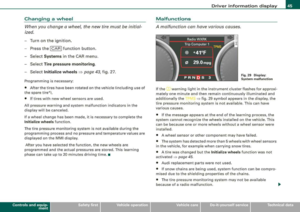 47
47 48
48 49
49 50
50 51
51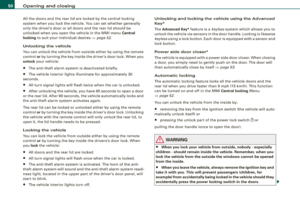 52
52 53
53 54
54 55
55 56
56 57
57 58
58 59
59 60
60 61
61 62
62 63
63 64
64 65
65 66
66 67
67 68
68 69
69 70
70 71
71 72
72 73
73 74
74 75
75 76
76 77
77 78
78 79
79 80
80 81
81 82
82 83
83 84
84 85
85 86
86 87
87 88
88 89
89 90
90 91
91 92
92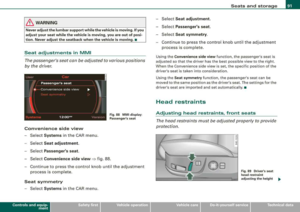 93
93 94
94 95
95 96
96 97
97 98
98 99
99 100
100 101
101 102
102 103
103 104
104 105
105 106
106 107
107 108
108 109
109 110
110 111
111 112
112 113
113 114
114 115
115 116
116 117
117 118
118 119
119 120
120 121
121 122
122 123
123 124
124 125
125 126
126 127
127 128
128 129
129 130
130 131
131 132
132 133
133 134
134 135
135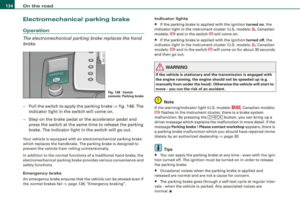 136
136 137
137 138
138 139
139 140
140 141
141 142
142 143
143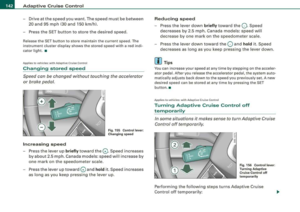 144
144 145
145 146
146 147
147 148
148 149
149 150
150 151
151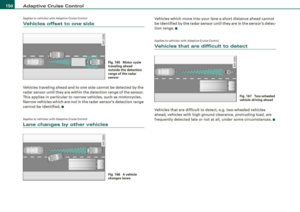 152
152 153
153 154
154 155
155 156
156 157
157 158
158 159
159 160
160 161
161 162
162 163
163 164
164 165
165 166
166 167
167 168
168 169
169 170
170 171
171 172
172 173
173 174
174 175
175 176
176 177
177 178
178 179
179 180
180 181
181 182
182 183
183 184
184 185
185 186
186 187
187 188
188 189
189 190
190 191
191 192
192 193
193 194
194 195
195 196
196 197
197 198
198 199
199 200
200 201
201 202
202 203
203 204
204 205
205 206
206 207
207 208
208 209
209 210
210 211
211 212
212 213
213 214
214 215
215 216
216 217
217 218
218 219
219 220
220 221
221 222
222 223
223 224
224 225
225 226
226 227
227 228
228 229
229 230
230 231
231 232
232 233
233 234
234 235
235 236
236 237
237 238
238 239
239 240
240 241
241 242
242 243
243 244
244 245
245 246
246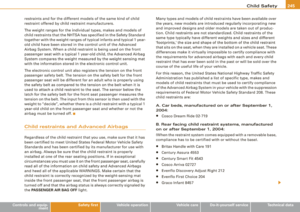 247
247 248
248 249
249 250
250 251
251 252
252 253
253 254
254 255
255 256
256 257
257 258
258 259
259 260
260 261
261 262
262 263
263 264
264 265
265 266
266 267
267 268
268 269
269 270
270 271
271 272
272 273
273 274
274 275
275 276
276 277
277 278
278 279
279 280
280 281
281 282
282 283
283 284
284 285
285 286
286 287
287 288
288 289
289 290
290 291
291 292
292 293
293 294
294 295
295 296
296 297
297 298
298 299
299 300
300 301
301 302
302 303
303 304
304 305
305 306
306 307
307 308
308 309
309 310
310 311
311 312
312 313
313 314
314 315
315 316
316 317
317 318
318 319
319 320
320 321
321 322
322 323
323 324
324 325
325 326
326 327
327 328
328 329
329 330
330 331
331 332
332 333
333 334
334 335
335 336
336 337
337 338
338 339
339 340
340 341
341 342
342 343
343 344
344 345
345 346
346 347
347 348
348 349
349 350
350 351
351 352
352 353
353 354
354 355
355 356
356 357
357 358
358 359
359 360
360 361
361 362
362 363
363 364
364 365
365 366
366 367
367 368
368 369
369 370
370 371
371 372
372 373
373 374
374 375
375 376
376 377
377 378
378 379
379 380
380 381
381 382
382 383
383 384
384 385
385 386
386 387
387 388
388 389
389 390
390 391
391 392
392 393
393 394
394 395
395 396
396 397
397 398
398 399
399 400
400 401
401 402
402 403
403






